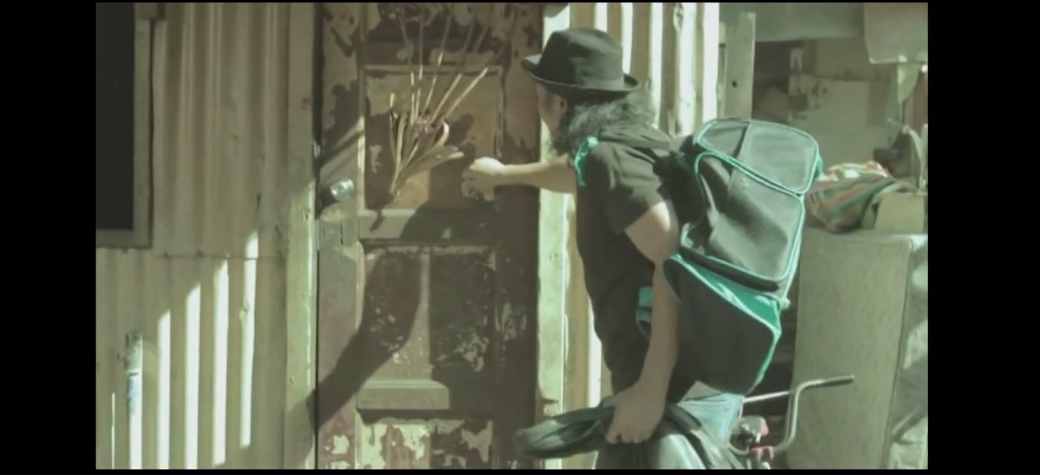Ang mga Kidnapper ni Ronnie Lazaro
"ANG MGA KIDNAPER NI RONNIE LAZARO" is about a group of down and out-of-luck men who decided to make a film starring Ronnie Lazaro, the most sought-after indie actor in the Philippines. Things get complicated when Lazaro decides to beg-off from acting on their supposed "indie film" and the guys were forced to abduct the actor.
PFA provides access for viewing of films with the approval or permission from the copyright owner(s) and those that are part of public domain. Access for viewing is also allowed to films in accordance with the statutory fair use of the government in accordance with law. To also safe guard and prolong the longevity of the material, PFA only allows these particular films to be viewed within PFA premises with compliance with guidelines in accessing and viewing these materials in the media library.
Reviews
Comments
MANILA, Philippines - Its title alone has drawn comparisons to Being John Malkovich, a 1999 “meta movie” starring John Malkovich as himself.
Yet writer-director Sigfreid Barros-Sanchez’s Ang Mga Kidnaper ni Ronnie Lazaro is more similar to Bowfinger, the Steve Martin-written and -starred comedy, also from ’99, about a no-name filmmaker’s madcap efforts at making a would-be blockbuster.
But whereas Bowfinger’s characters aimed to make an action-packed blockbuster, Mga Kidnaper’s own ragtag crew has a humbler goal: to make an action-packed indie movie.
And as its 6-word title suggests, the 2012 film argues that for a local independent flick to work, it should star “indie-mand” thespian Ronnie Lazaro, even if it means abducting the actor.
In the zone for the funny bone
This extreme conceit is played largely for laughs. As a result, Mga Kidnaper is mostly teeming with hilarity.
For something like the film’s first 30 minutes and then within its last half-hour, Mga Kidnaper is one big LOL-fest.
It becomes so by mining the funny in its ludicrous plot, even in alterna-cinema glamor (if Lazaro is indie king, then Joel Torre, also portraying himself here, is the perennial prince) and in the film’s own sendup of the Pinoy action movie — the latter resulting in one of two profoundly funny Mga Kidnaper moments, both coincidentally biblical in reference.
(Said sendup calls for some of the characters to narrate their planned movie’s plot. As they do so, the screen shows the envisioned scenes replete with the narrators as various characters — a playful scheme that manages to draw chuckles even if we had seen it rendered in the likes of Forrest Gump, especially given veteran indie player Raul Morit’s willingness to cross-dress.)
Along the way, Ang Mga Kidnaper ni Ronnie Lazaro transcends itself and the usual theatrical fare by transforming into an out-of-movie experience.
That is, while its plot thickens, the movie and its viewers get to see things from a higher plane: As its characters engage in hyper dialogue that deliberately cribs ideas from Hollywood’s treasure chest of clichés, Barros-Sanchez’s film proceeds to subtly allude to another set of kidnappers, namely other directors who have held audiences captive with their respective flicks.
And as its denouement draws near, Mga Kidnaper unveils a larger agenda: to declare that, while film may be high art, filmmaking is actually a down-to-earth, anyone-can-shoot process.
This movie is likewise a celebration — not just of this realm of cinema as a low- to no-budget passion but also of how “indie” is synonymous to “free" — for its greater room for creativity, its vast potential for topicality and its actors’ gameness despite lack of financial reward.
Hooray for indie actors
Mga Kidnaper underscores that latter bit about actors in multiple ways.
For one thing, it has a platoon of presumably payless cameos, including (by creative spirits) Ramon Bautista, Tado, Dong Abay, Jim Libiran and Lourd De Veyra, as well as from actual indie filmmakers seen here as themselves as well.
There is also the winsome ensemble as seen in the film’s excellent poster (rendered by Richard Legaspi, Barros-Sanchez’s indie colleague and fellow University of the East alumnus), which includes Morit, Nonie Buencamino, Dwight Gaston, Hector Macaso, underground (“undie”?) legend Mon Lee, Epy Quizon and Soliman Cruz. (Cruz, who plays a pirated-DVD seller, even rendered virtual performance art right after Mga Kidnaper’s recent CCP screening, hawking “dibidis” of the movie’s soundtrack of new songs mainly by The Wuds’ singer-songwriter-indie musician Bobby Balingit.)
Mga Kidnaper also gets to depict the reality of indie actors still needing to make ends meet, as witness Torres’ presence here as a grilled-food restaurateur.
But perhaps the best actorly point the film makes is via Lazaro himself: the man is not only sought-after for his effective acting skill but also for his discernible amiability — the other trait that makes him truly “kidnappable.”
If Ang Mga Kidnaper ni Ronnie Lazaro stops short of being a magnum opus, its viewers so far can likely point to its narrative obesity.
While still clocking in at a little under two hours, the movie actually feels about 30 minutes longer, due to scenes here and there where some trimming could have helped.
On those occasions, a character or two resorts to rambling, the pace stalls and the movie almost grounds to a halt. The flick could have also let go of a number of supporting characters who turn out to be ultimately unessential.
In other instances, absent logic, even for a movie about an illogical, faux-criminal deed, should have been present. (An example: The titular abductors bicker loudly at the apartment-cum-main setting’s ground level while a different film crew is at work upstairs, the house vertically divided merely by a wooden floor with gaping partitions).
Captivating cinematic captives
Such imperfections — essentially battle scars of guerilla filmmaking — however do not detract from this loaded fact: Ang Mga Kidnaper ni Ronnie Lazaro is one of the funniest Filipino movies of our time, if not of all time and is far more deserving of wide theatrical release than many of the contrived bonanzas that manage to get unspooled on the country’s silver screens.
Mga Kidnaper’s screenings have been limited so far to the 1st Sineng Pambansa filmfest of the Film Development Council of the Philippines, where it won the Grand Festival Prize and the Ensemble Best Actor award; to Cinemalaya 2012, where it was a guest feature, an ironic triumph considering that that annual cine-fiesta had repeatedly rejected Mga Kidnaper as a competing entry; and at the ongoing Cinemalaya Goes UP at the Diliman campus’ Film Center.
That’s another out-of-movie spectacle right there: of how further unfair and challenging things can be for the otherwise steadfast indie filmmaker.
In the end, through Mga Kidnaper, Barros-Sanchez is not just intent on entertaining. He is likewise bent on inspiring other would-be proverbial kidnappers — those willing, despite the odds, to hold audiences happily hostage with their engrossing, cinematic works of whimsy. (BERT B. SULAT JR. AUGUST 4, 2012)
SOURCE: https://www.rappler.com/entertainment/a-misadventure-in-indie-filmmaking











Great film!
Awesome